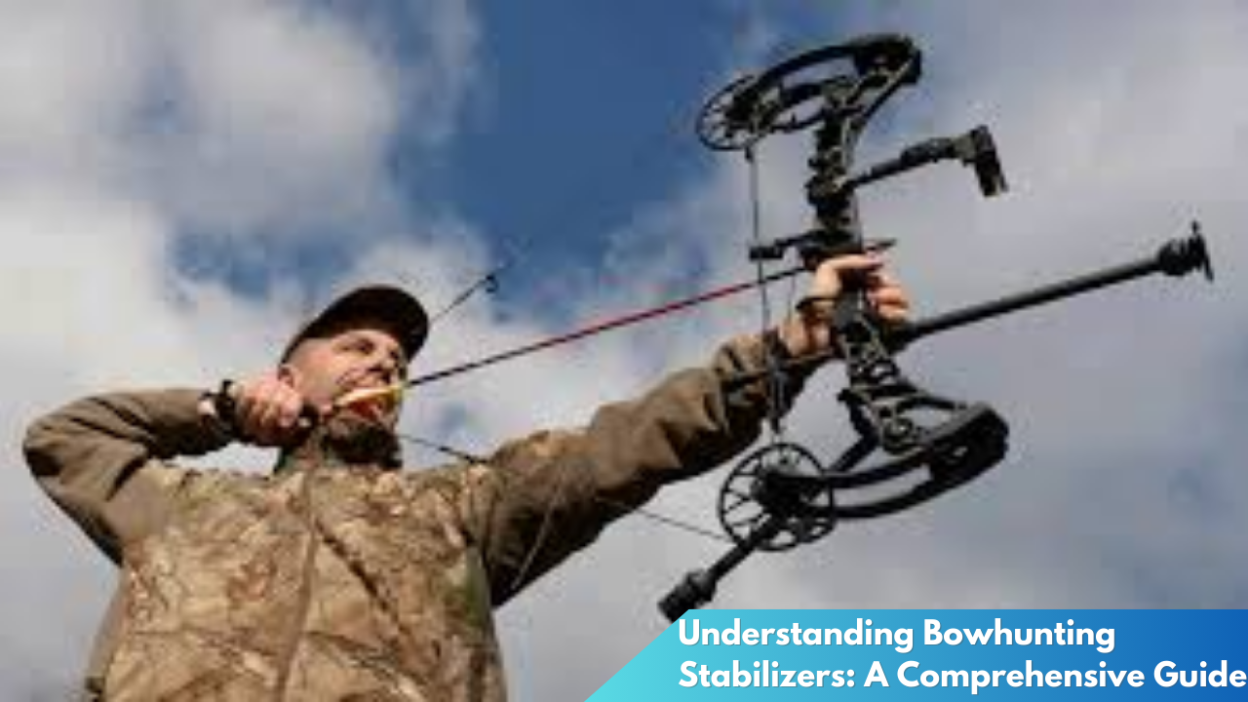In the sport of bowhunting, precision and consistency are crucial for ensuring a successful hunt. As archery technology advances, hunters are continually seeking ways to improve their accuracy and effectiveness. Among the numerous accessories available, stabilizers hold a significant place in enhancing a bowhunter’s performance. This guide aims to provide a comprehensive understanding of bowhunting stabilizers, focusing on their role, essential features, and how to choose the right one for your needs.
The Role of Stabilizers in Bowhunting

Stabilizers are essential components that contribute significantly to the stability and balance of a bow. They work by reducing vibrations and noise that occur when an arrow is released. This reduction is critical for increasing accuracy, as it helps maintain the bow’s equilibrium, making it easier to aim consistently. By absorbing the energy that causes vibrations, stabilizers ensure a smoother shot, which can be the difference between a hit and a miss in the field.
In addition to vibration dampening, stabilizers also aid in better balance and weight distribution of the bow. By adding weight to the front of the bow, they counteract the natural forward motion that occurs upon release. This added weight shifts the bow’s center of gravity, promoting steadiness during the aiming process. The result is improved control over the bow, allowing hunters to make more precise shots even in challenging conditions.
Moreover, stabilizers play a crucial role in reducing fatigue during extended hunting sessions. A well-balanced bow is easier to hold steady for more extended periods, minimizing muscle strain and allowing hunters to focus on their target. The combination of vibration reduction, enhanced balance, and decreased fatigue makes stabilizers indispensable tools for bowhunters seeking to elevate their game.
Key Features of Effective Bow Stabilizers
When assessing the effectiveness of bow stabilizers, one of the primary features to consider is their length. Stabilizers come in varying lengths, with longer ones generally providing better stabilization but potentially impacting maneuverability. Hunters must find a balance that suits their hunting environment, as longer stabilizers may be cumbersome in dense brush, while shorter ones offer more flexibility without sacrificing too much stability.
Material composition is another critical factor in determining a stabilizer’s performance. High-quality stabilizers are typically constructed from lightweight yet durable materials, such as carbon fiber or aluminum. These materials not only ensure longevity and resilience against harsh outdoor conditions but also contribute to the overall balance of the bow by not adding excessive weight.
Additionally, the incorporation of dampening technology is a hallmark of effective stabilizers. This feature is crucial for minimizing noise and vibrations, improving shot accuracy and overall hunting experience. Elements such as rubber dampers or gel inserts can significantly enhance a stabilizer’s capacity to absorb shock, making for a quieter and more controlled shot. Thus, selecting a stabilizer with advanced dampening technology is essential for hunters aiming to enhance their bow’s performance.
Choosing the Right Stabilizer for Your Needs

Selecting the right stabilizer begins with understanding your specific hunting requirements and preferences. Consider the type of game you pursue and the environment you typically hunt in. For instance, hunting in open fields might allow for longer stabilizers, whereas navigating through thick forests might require a more compact setup to avoid snagging on brush.
Another crucial factor to consider is the weight of the stabilizer. While added weight can enhance stability, it is vital to ensure that the bow remains comfortable to handle over extended periods. Experimenting with different weights and lengths can help determine the optimal configuration for your shooting style and physical strength, ensuring that the stabilizer complements rather than hinders your performance.
Lastly, budget constraints can influence your choice of stabilizer. With a wide range of options available, it’s possible to find high-quality stabilizers at various price points. However, investing in a reputable and well-reviewed stabilizer is advisable, as it can significantly impact your accuracy and hunting success. Balancing cost with quality ensures you get the most value out of your purchase while enhancing your bowhunting experience.
In conclusion, bowhunting stabilizers are indispensable accessories that can greatly influence a hunter’s precision and effectiveness in the field. By understanding their role, key features, and how to choose the right one, hunters can tailor their equipment to better meet their needs and preferences. Whether you’re a seasoned archer or a novice bowhunter, investing in a quality stabilizer can enhance your shooting experience, making each shot more accurate and enjoyable. As technology advances, the options for stabilizers continue to grow, offering hunters an ever-expanding array of tools to enhance their skills and success in bowhunting adventures.



